14 Rare Pieces of Military Gear From the Early 20th Century
When it comes to military history, the early 20th century stands out for its remarkable advancements in technology. Many of the gear used during the time, now considered rare, played a vital role in shaping the outcome of global conflicts. Some of these pieces are not only functional but also symbolize the spirit and determination of the soldiers who used them. Collectors and historians alike treasure these artifacts for their historical significance.
This post may contain affiliate links, which helps keep this content free. Please read our disclosure for more info.
British Smoke Hood (Gas Mask)
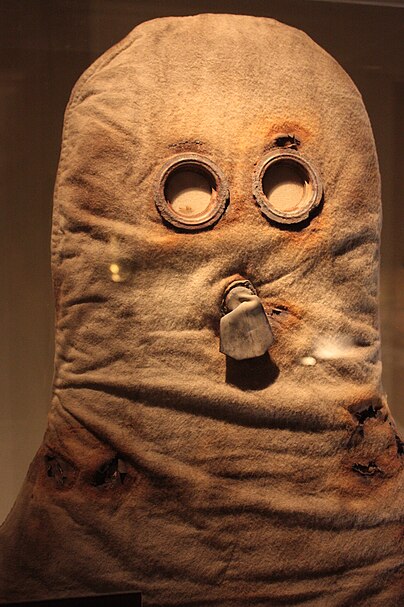
Introduced in 1915, the British Smoke Hood was one of the first gas masks issued during World War I to protect soldiers from chlorine gas attacks. The hood was made from treated canvas, with a mica eyepiece and simple filtration system to block harmful gases. This item is rare due to its early use in the war and its fragile construction, making it difficult to find in good condition today. The original bags and instructions further increase its value to collectors. Current market prices range from $800 to $1,500, depending on its condition and included accessories.
The rarity of the British Smoke Hood comes from the limited number that survived due to heavy use and the fact that many were discarded after the war. The condition of the fabric and the presence of the original filter can also affect the price. Some versions still feature the original markings, adding extra value. The historical significance of this piece as part of early chemical warfare protection makes it a prized collectible. As a result, collectors often pay a premium for examples with original packaging and intact materials.
Zelinsky-Kummant Gas Mask
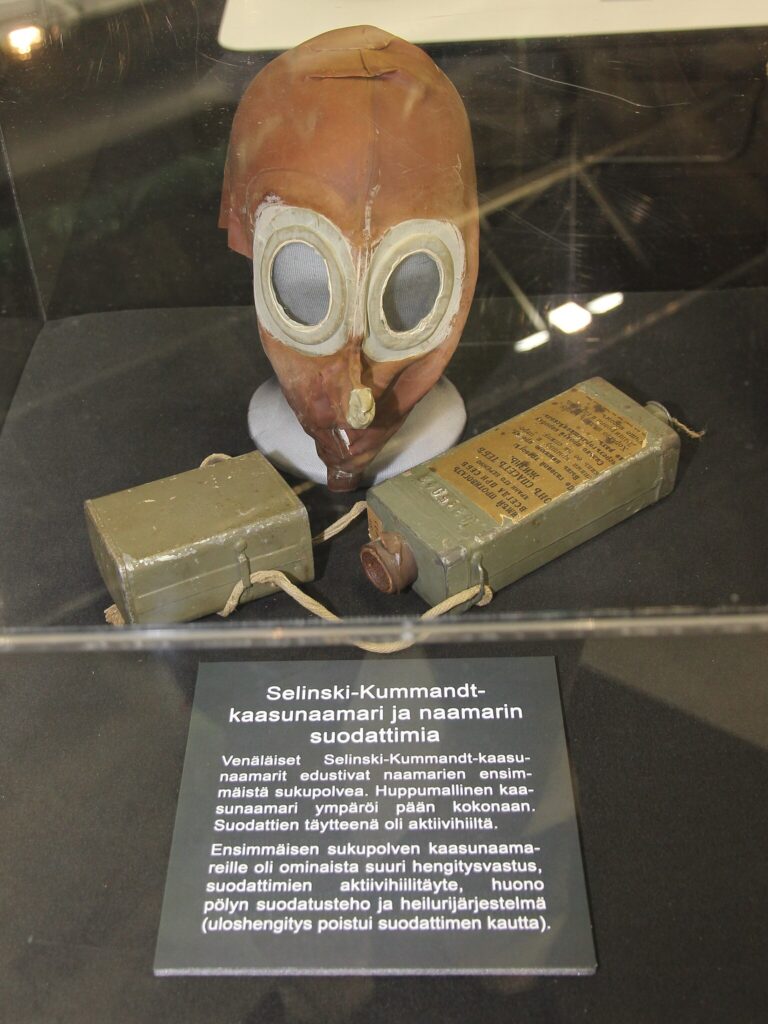
Developed in 1915, the Zelinsky-Kummant Gas Mask was used by Russian forces during World War I. This early gas mask was designed to protect soldiers from chlorine and other chemical agents that were used extensively during the war. What makes this mask rare is its limited production and use, as well as the unique design, which was later replaced by more efficient models. An original Zelinsky-Kummant Mask can fetch between $600 and $1,200 depending on condition and markings. The mask’s historical context and the age of surviving examples make it a sought-after item.
The rarest versions of this mask are those that still contain the original filter or canister. Given its limited issue and the general wear from wartime, finding one in decent condition is challenging. Some collectors also value masks that come with original military packaging, increasing the item’s worth. The Zelinsky-Kummant Mask is a significant piece in the history of chemical warfare, adding to its appeal among collectors. If marked with early production dates or used in battle, the value can rise considerably.
M1910 T-Handle Trench Shovel
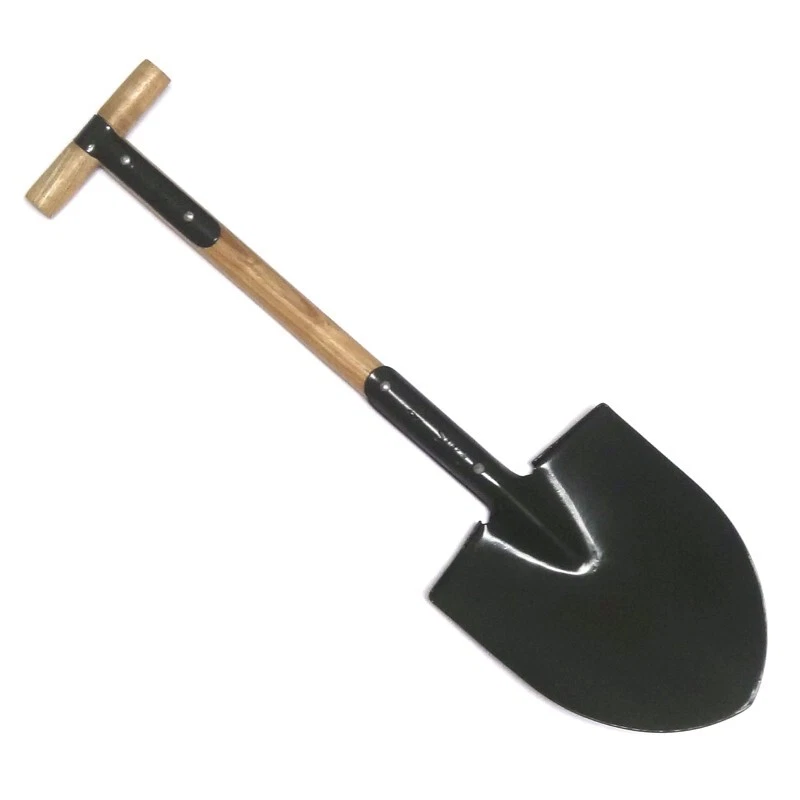
The M1910 T-Handle Trench Shovel was introduced by the U.S. Army in 1910 and was widely used during World War I for trench digging and combat. The design features a long, sturdy handle and a blade capable of cutting through soil and debris. What makes it rare is the large-scale use during trench warfare and the fact that many were damaged or discarded after the war. In good condition, these shovels are valued at around $150 to $300. The presence of the original leather carrier or maker’s marks can raise the price considerably.
The M1910 Trench Shovel is often sought after for its historical significance and connection to the harsh conditions soldiers endured during World War I. Examples in excellent condition with little rust or wear are less common, making them more valuable to collectors. Additionally, surviving examples with distinctive markings or specific production dates can attract higher offers. The shovel’s simple yet effective design highlights the resourcefulness of soldiers at the time. Because of its durable build and utilitarian purpose, it remains a popular collector’s item.
Mauser C96 Broomhandle Pistol
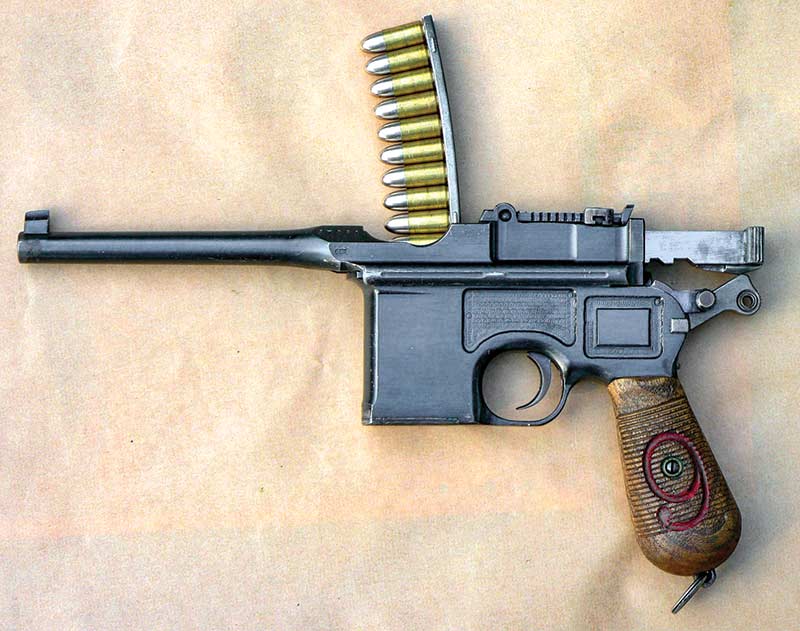
First introduced in 1896, the Mauser C96 Broomhandle pistol became a prominent weapon during World War I and continued to see use in the early 20th century. Known for its distinctive broom-handle grip and integral magazine, it was issued to officers and specialized troops. The rarity of this pistol comes from its long history, limited production numbers, and the fact that many early versions were worn down or modified. Depending on condition and markings, the price can range from $3,000 to $6,000. Pistol variants with unique engravings, military issue stamps, or original accessories can fetch higher values.
Collectors prize the Mauser C96 for its design and historical significance, as it was one of the first pistols with a detachable magazine and an advanced recoil mechanism. Early models, especially those marked with specific military insignia or limited serial numbers, are particularly rare. The gun’s association with both World War I and the Spanish Civil War adds to its appeal. In good condition, especially with original holsters or accessories, it can command a premium on the collector’s market. If you find a version with early factory stamps, its value can increase significantly.
Hypo Helmet
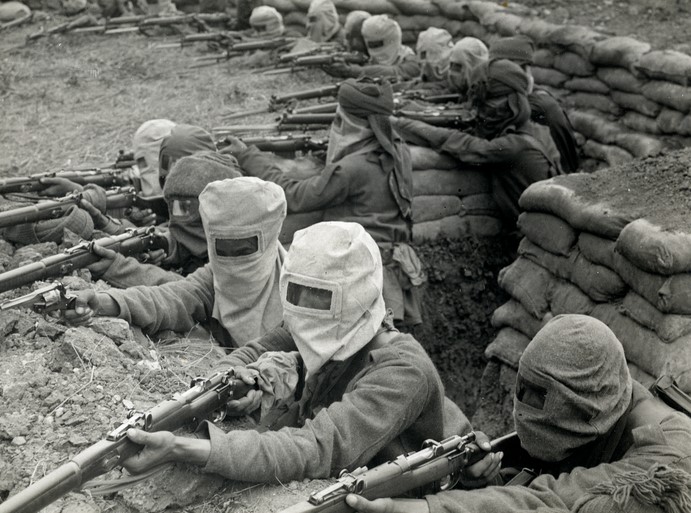
The Hypo Helmet was developed by British forces in 1915 during World War I as a method of protecting soldiers from chemical agents in gas attacks. The design featured a simple canvas hood with a filter and a rudimentary filtration system to keep toxic gases at bay. Its rarity stems from the limited production and the fact that most were replaced by more effective designs later in the war. The Hypo Helmet, when found in good condition, can range in price from $500 to $1,000. Collectors particularly seek examples with intact filters or original bags.
What makes the Hypo Helmet highly collectible is its historical significance and its status as one of the first attempts to protect soldiers from chemical warfare. Many surviving examples are in poor condition, with fragile fabrics or missing parts. Helmets that still feature the original filters, bags, or instructional materials are highly sought after. Due to the nature of wartime use, these helmets were often discarded or repurposed, making well-preserved pieces rare. This item is a significant part of military history and a must-have for serious collectors.
MacAdam Shield-Shovel
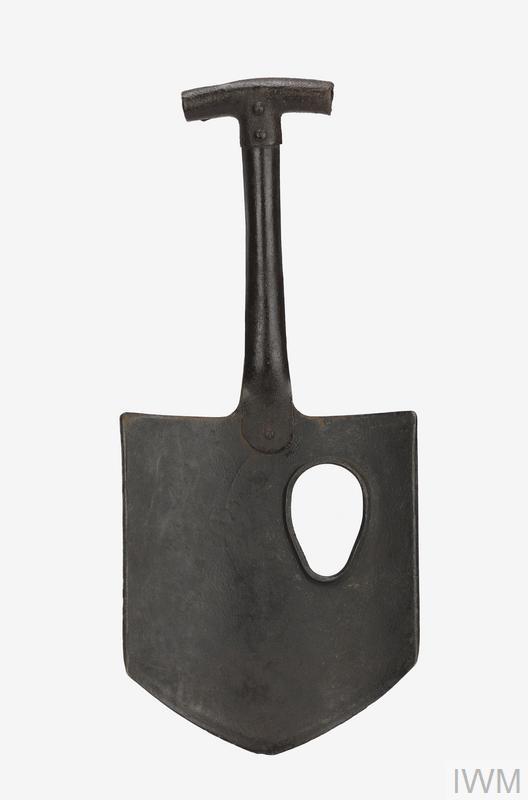
The MacAdam Shield-Shovel, introduced in 1914, was designed as a two-in-one tool for soldiers in World War I. This unique piece combined a trench shovel with a small shield, allowing soldiers to dig while maintaining some defense from enemy fire. Its rarity comes from the limited number produced and the fact that many were discarded or modified during or after the war. Prices for well-preserved versions of the MacAdam Shield-Shovel range from $400 to $700 depending on condition. Collectors highly value original examples with their unique dual-purpose design.
This tool’s design was meant to increase efficiency and safety for soldiers working in the trenches, which makes it an important part of military history. Its rarity is compounded by the fact that most were not kept after the war ended due to their dual function. The shield-shovel’s simplicity and practicality made it ideal for combat engineers but less popular as a collectible due to its utilitarian nature. Those in good condition, with minimal rust or wear, can fetch higher prices. The dual use of this item makes it a fascinating piece in the history of military innovation.
1914 German Stahlhelm Model 1916
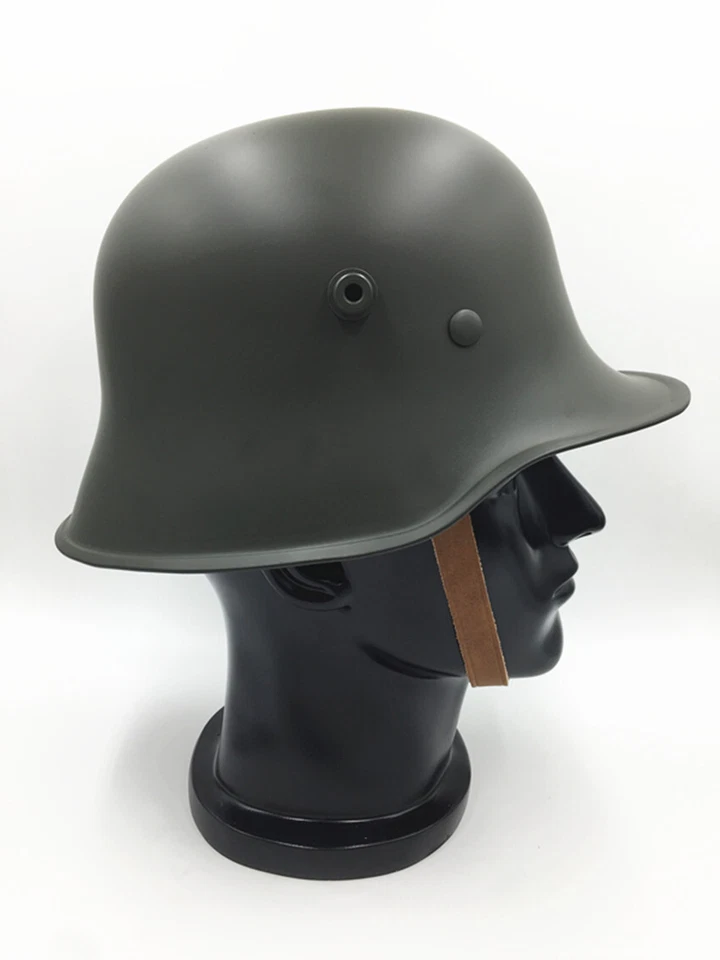
The German Stahlhelm, introduced in 1916, became one of the most iconic helmets used during World War I. Its distinctive steel design provided better protection for soldiers’ heads compared to previous helmets. The early versions, particularly those stamped with production marks from 1916, are considered rare today due to their limited production. Prices for these helmets can range from $1,000 to $2,000 depending on condition and authenticity. Helmets with original paint, decals, and chin straps are particularly prized.
The rarity of the Stahlhelm Model 1916 stems from the short production window and the heavy use it endured. Most examples show signs of wear and tear, and only a few have survived in excellent condition. Collectors are particularly interested in helmets with battle damage, which adds to the piece’s historical significance. Examples with soldier markings or provenance can also see higher prices. For serious collectors, the Stahlhelm remains a symbol of early 20th-century military innovation.
US M1918 Trench Knife

The M1918 Trench Knife was introduced to U.S. forces in 1918 for close-quarters combat in the trenches during World War I. With a brass knuckle handle and a blade designed for stabbing, this knife was a weapon of choice for American soldiers. Its rarity comes from the limited number produced, as many were lost or damaged during the war. A good example can fetch between $300 to $600, with pristine examples or those with markings from specific units or campaigns being more valuable.
The M1918 Trench Knife is known for its functional design, which made it an effective tool for hand-to-hand combat. The rarity of this knife is due to the harsh conditions of trench warfare, where many knives were lost or destroyed. Surviving examples with original leather sheaths and military stamps are highly sought after by collectors. Knives with specific soldier names or unit affiliations can add extra value. For collectors, the M1918 is a crucial piece in the history of World War I combat gear.
French Adrian Helmet Model 1915
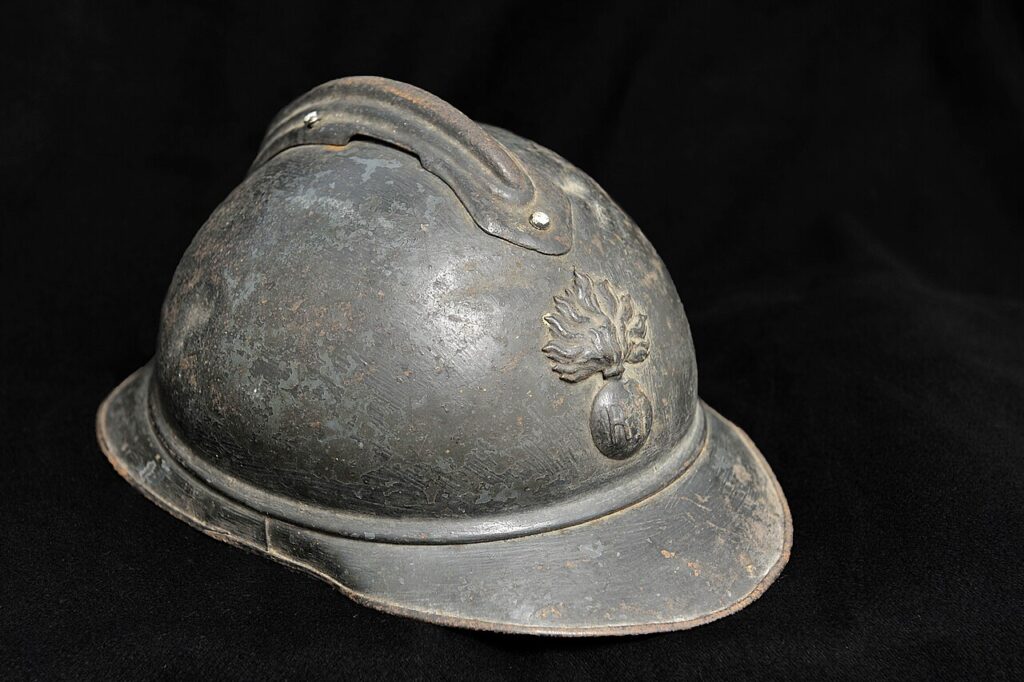
The French Adrian helmet, introduced in 1915, was one of the first steel helmets used in combat during World War I. Its design was intended to protect soldiers from shrapnel, and it was widely issued to French and other Allied forces. The rarity of the Adrian helmet is due to its early introduction, limited production, and the fact that many were worn out, repainted, or discarded after the war. The price for a good example typically ranges from $800 to $1,500. Helmets with unit insignia or original paintwork tend to be more valuable.
The Adrian helmet is a symbol of early military protection during World War I. While it was widely used, surviving examples in good condition are rare, particularly those with original parts such as the liner or chinstrap. Collectors look for helmets with military markings or signs of use during significant battles, which increase the item’s historical value. The distinctive shape and lightweight design make the Adrian helmet a popular collectible. If the helmet comes with original accessories or provenance, it can reach higher prices.
Swiss K31 Carbine

The Swiss K31 Carbine, introduced in 1931, was widely used by Swiss forces during the early 20th century. Though introduced slightly after World War I, the K31 was a key weapon for the Swiss military and continued to see use during World War II. The rarity of the K31 is due to its high manufacturing quality and the relatively low number of surviving examples in good condition. Collectible examples of the K31 can be found in the range of $1,200 to $2,500. Rifles with matching serial numbers or military markings tend to fetch higher prices.
The Swiss K31 is admired for its accuracy, craftsmanship, and efficient design. Its rarity comes from its limited production and use outside Switzerland, with many rifles being kept in storage or decommissioned over the years. Collectors prize well-maintained examples, especially those that come with accessories like the bayonet or original sling. The rifle’s quality and history make it a desirable piece for military collectors. With its distinctive bolt-action mechanism, the K31 remains a prized piece of Swiss military history.
Italian M1914 Beretta Early Semi-Automatic Pistol
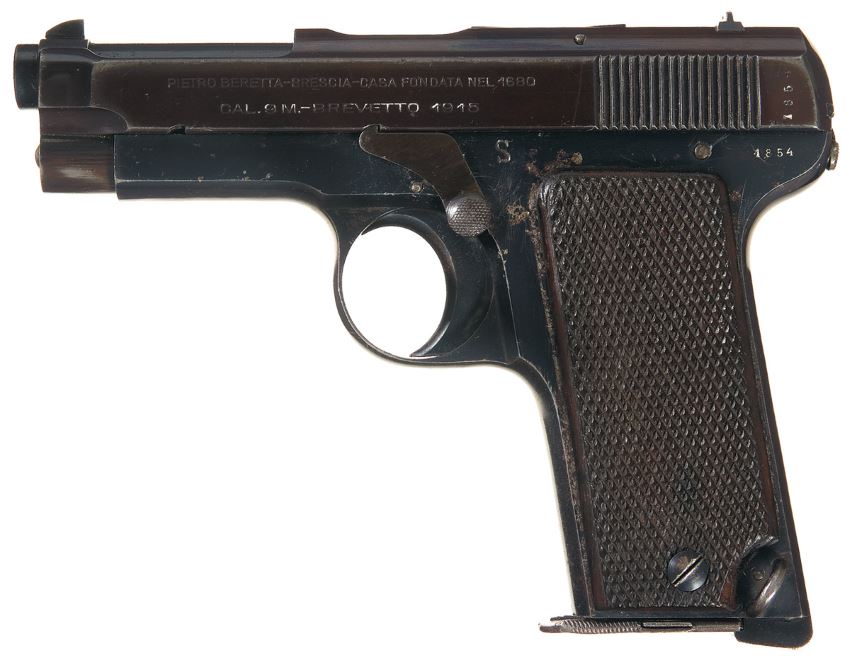
The Italian M1914 Beretta was introduced in 1914 and was used by Italian forces during World War I. This early semi-automatic pistol features a compact design and became a standard sidearm for many military officers. Its rarity comes from the relatively small number produced and the fact that many were modified or lost during the war. A well-preserved M1914 Beretta can be valued between $2,000 to $4,000. Pistol variants with unique engravings or military issue stamps can increase its market value.
The M1914 Beretta is significant for its early use in semi-automatic pistols, making it a precursor to many later designs. It was widely used by Italian officers during the war but did not see as much use outside Italy, making it less common today. Examples in excellent condition with matching serial numbers or military markings are highly sought after by collectors. The rarity and design innovation make this pistol a valuable addition to any collection of early 20th-century firearms. A pistol with its original holster or in pristine condition could command an even higher price.
Japanese Type 38 Arisaka Rifle

The Japanese Type 38 Arisaka Rifle was introduced in 1905 and saw use during World War I and beyond. This bolt-action rifle was known for its accuracy and reliability, making it a staple of Japanese infantry forces. The Type 38 is rare today due to the relatively low number of surviving examples, particularly those from early production years. A well-maintained example can be valued between $800 to $1,500. Rifles with matching serial numbers or original accessories such as bayonets tend to be more valuable.
The Type 38 Arisaka is prized for its craftsmanship and the role it played in numerous battles throughout the early 20th century. Its rarity is due to the fact that many were modified or destroyed after the war. Collectors often seek early models with original wood furniture and intact metal parts. The rifle’s robust design and long history make it an appealing item for those interested in military firearms. Examples with battlefield provenance or rare markings can increase in value.
US Springfield Model 1903 Rifle
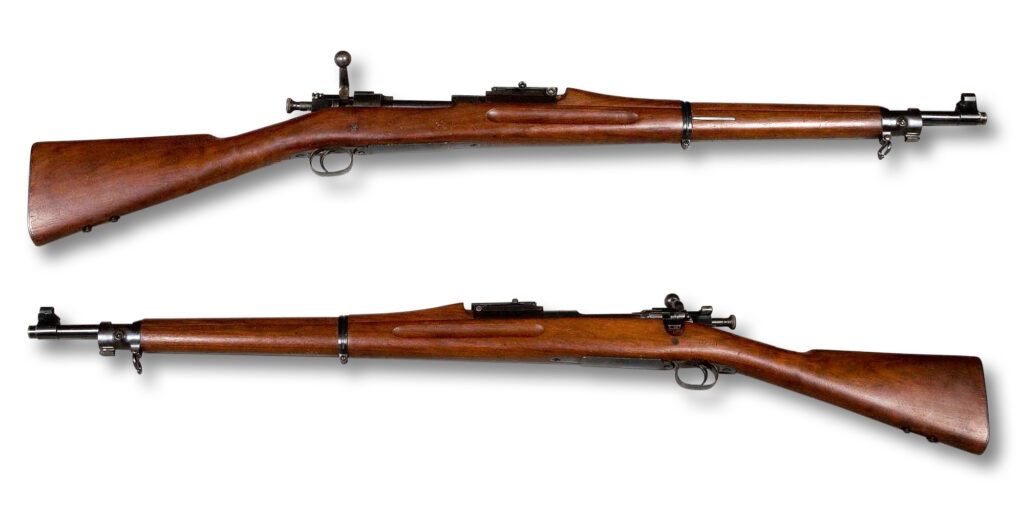
The Springfield Model 1903 rifle was introduced in 1903 and became the standard issue rifle for U.S. troops during World War I. Known for its accuracy, it was also used during World War II in various forms. The rarity of the Springfield Model 1903 comes from its early production years and the fact that many rifles were refurbished or replaced. Prices for a well-preserved example can range from $2,000 to $5,000. Rifles with original scopes, special markings, or historical significance can command even higher prices.
The Springfield Model 1903 is celebrated for its precision and reliability, with many examples being issued in the early stages of World War I. Its rarity comes from the modifications made over time and the number of rifles that were discarded or damaged. Collectors value original parts, including the bayonet and sling, and examples with known histories or provenances are especially desirable. The rifle’s historical importance in both world wars makes it a sought-after piece for military collectors. Well-maintained examples with minimal refurbishing are the most highly valued.
German MG08 Machine Gun
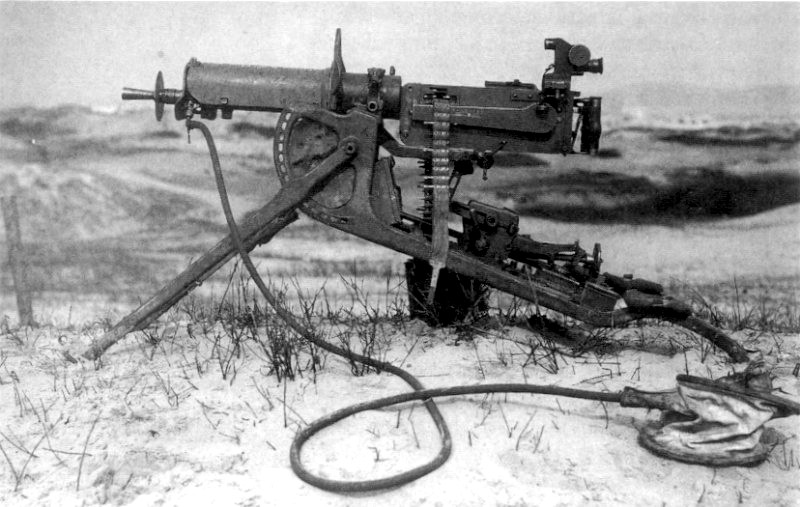
Introduced in 1908, the MG08 was a heavy machine gun used extensively by the German Army during World War I. This water-cooled, belt-fed machine gun was mounted on a tripod and played a critical role in trench warfare. The MG08 is rare today due to the limited number of original, fully functional pieces, as many were either destroyed or melted down after the war. The current value of an MG08 in good condition can be between $10,000 and $20,000 depending on its completeness and provenance. Well-preserved examples with original attachments such as tripods and belt feeds tend to increase in value.
The MG08’s rarity is compounded by its large size and the difficulty in maintaining original parts, including the water-cooling system. Collectors prize the MG08 for its historical significance and the fact that it represents a major shift in military technology. The machine gun was one of the most feared weapons on the battlefield during World War I, and surviving examples are often featured in military museums. Due to its size and weight, most of the original weapons have been lost or heavily modified. An example with intact markings and battle history can reach the highest end of the market.
This article originally appeared on Avocadu.
